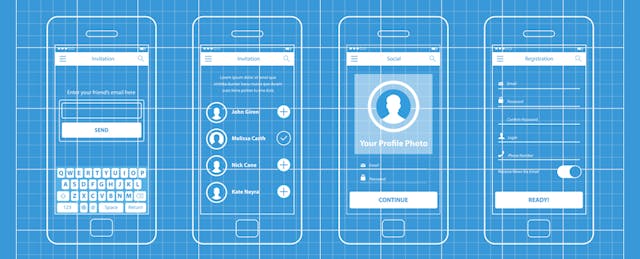Over the next four years, nearly a billion students will enter middle and high school, and if recent projections are accurate, most of them will have a smartphone in their pocket. These students will decide what apps they use and when they use them, and could potentially take large parts of their education into their own hands.
Despite this potential, there are few break-out apps that cater directly to students. The education app charts are led by games and classroom tools, and the largest student-focused apps—Duolingo, Quizlet, and recently PhotoMath—only serve a thin slice of student needs, leaving huge potential for new entrants.
We’ve spent the last two years at Socratic studying how students learn with the Internet. In hopes of inspiring the development of more student-focused apps, we’d like to share some of our insights about how students use their phones while studying today.
Battery life is everything
For teenagers, phones are the central node of social interactions and the place where events unfold in real-time. The cost of being out of the loop is high, and they check their phones constantly. But this constant usage means users start running into limits: battery life, storage space and data.
In one user test, a student didn’t see a feature we had designed because her screen was too dim. Since then, we’ve noticed most high school students keep their brightness at the minimum so their phones will make it through the day.
We’ve also found that students tend to have slightly older phones and use lots of apps, which means they often run out of storage space on their devices. If your app is liberal in its usage of storage, data, or battery life, don’t be surprised to see it get purged.
Photos are the quickest way to share content
Typing out a homework question on a mobile phone takes forever, and many assignments can’t be typed at all— math symbols, diagrams, charts. But all of these can be photographed in an instant, and as a result, students use photos all the time.
It’s common for students to snap a photo of a half-done problem, send it to a friend, have the friend write out the next steps on paper, snap a photo of that and send it back. Students also use images to share digital content; it’s easier to take a screenshot and share it than to copy-and-paste a URL into iMessage.
Enabling photo input in an app isn’t always easy, but it is powerful. PhotoMath has proprietary technology to recognize equations. There are new image recognition APIs from Google and IBM which are surprisingly accurate, and micro-tutoring apps like GotIt and Mathcrunch let students send photos of their questions to tutors.
Students treat their phones like a tutor, not a textbook
When students turn to the Internet for help, they often start by going to Google and typing in their exact homework question, and usually end up on Yahoo Answers or Answers.com. Only when the exact question fails to help do students modify their query to make it more general.
Interestingly, most “high quality” educational sites (Khan Academy, CK-12, Coursera, etc.) weren’t created to answer specific questions, so they don’t show up in these search results.
If you are creating educational content, think hard about its granularity, and make it searchable and discoverable by the types of questions students will ask.
Today’s educational content is painful to consume on mobile devices
Most educational content online was created to be read on a computer with a large screen and a fast connection. We’ve watched students scroll through 20-page PDFs on their phones, squinting at tiny font to get their answer. Even regular websites that aren’t optimized for mobile can be really painful to read on a phone. In our tests, 40 percent of the sites students opened on their phones took more than five seconds to load.
Content created for the phone should be mobile native: fast, chunked and easy to read on a small screen. Bonus points for mobile-friendly multimedia: animated gifs work great and if you have videos, follow Snapchat’s lead and make them vertically-oriented so students don’t have to turn their phones sideways. Also, check out Google’s Primer app for an innovative card-based UI.
Friends teach each other over chat
If Googling doesn’t work, students will ask their friends for help. When doing so one-on-one or in small groups, students will typically use iMessage, Facebook Messenger or WhatsApp. To communicate with their whole class, students often create Facebook groups at the beginning of the year and invite all their classmates. This becomes the go-to place to ask about class logistics and, sometimes, homework help.
Students we’ve spoken with say they are very aware of exactly who in their class understands any given material, and how willing that student will be to help them. They’re also thoughtful about whom they’ve asked for help too many times, and how asking makes them look.
If you’re building a social product, be thoughtful about whom students want to share with. Their best friend? A few study pals? The whole class? Will the teacher see what they post? The answers will drastically affect the tone and content of what students post.
In 1980, Steve Jobs famously described the personal computer as a “bicycle for the mind” because it enabled humans to do more. We believe that smartphones can play the same role for students: give them superpowers so they can learn more things, more deeply, on their own.
It’s clear that there are billions of people around the world who want to learn, and smart phones could go a long way in making learning more accessible. Making that happen is going to take a lot of work and collaboration; the sooner we do it, the better.


